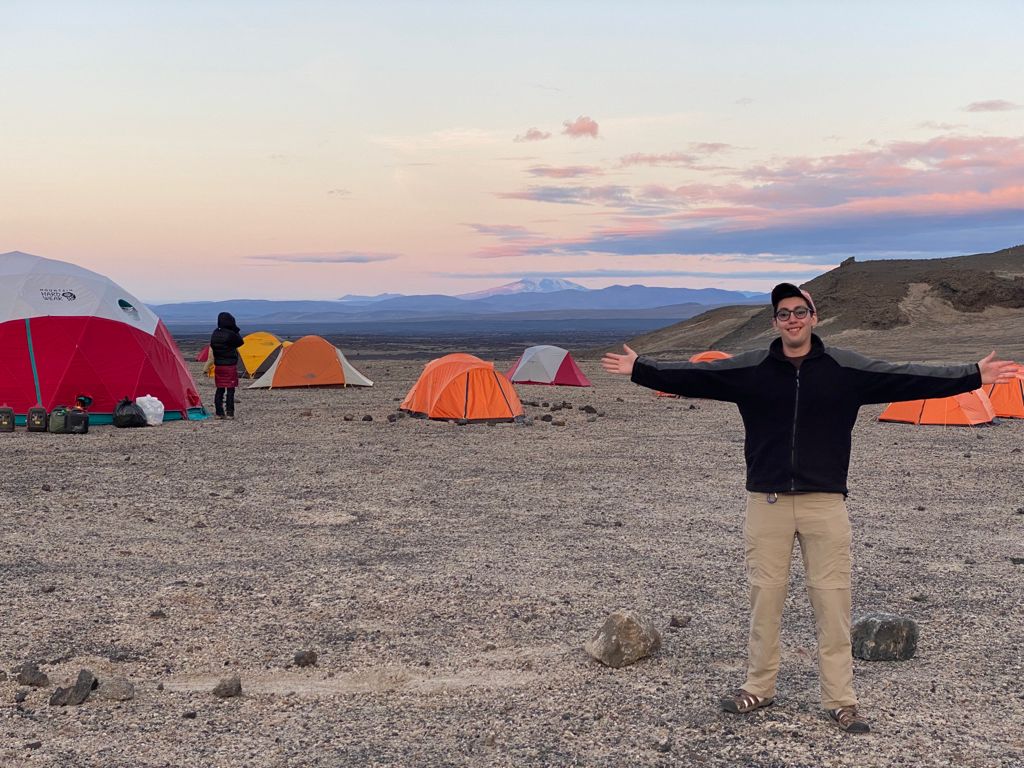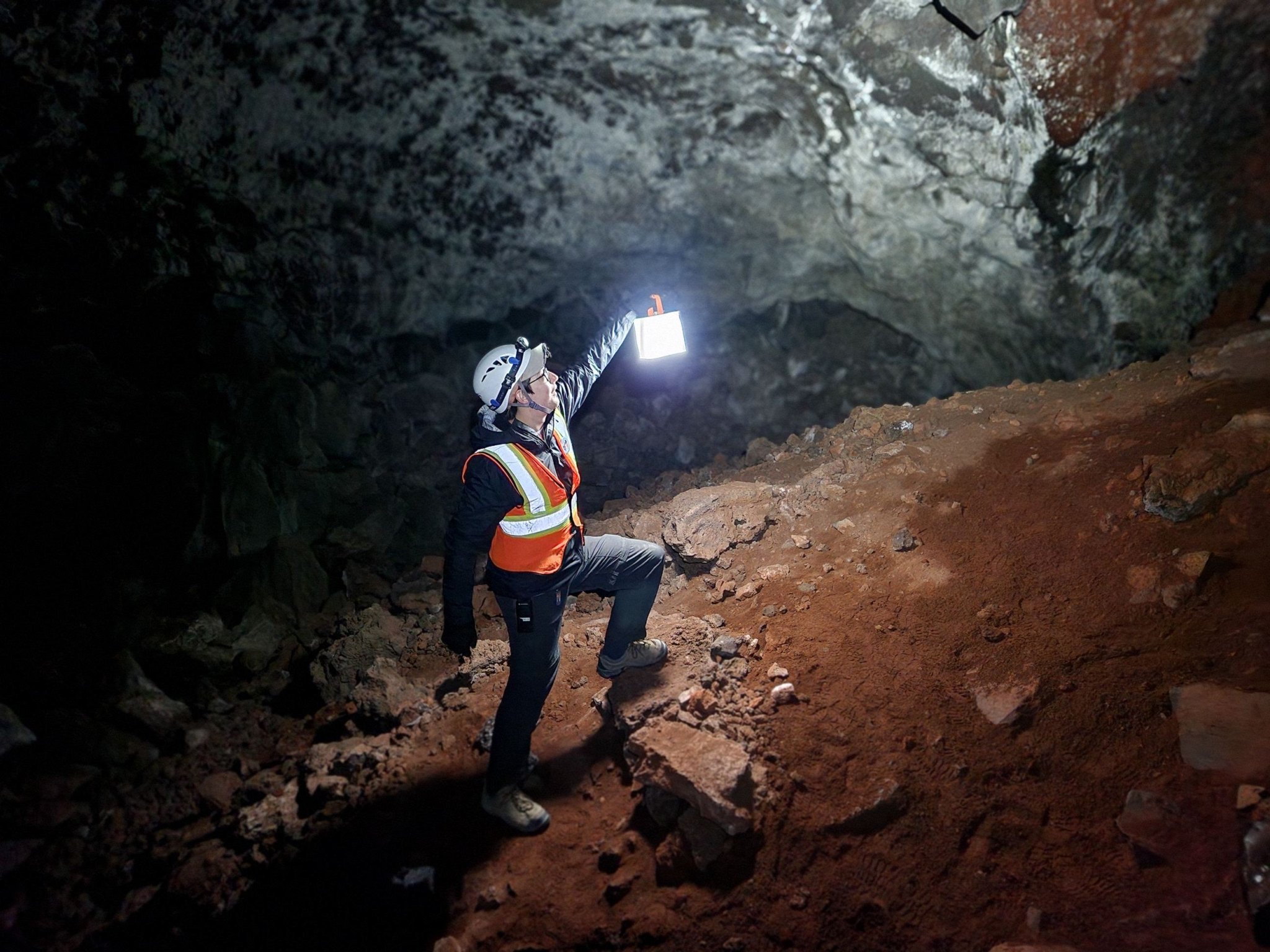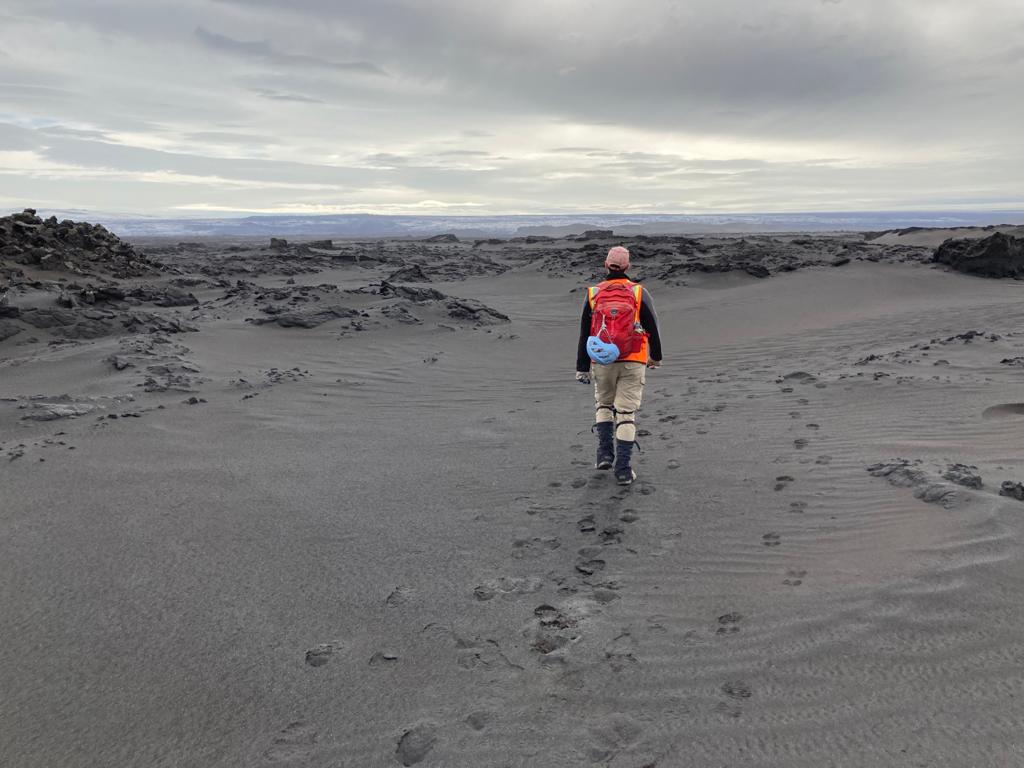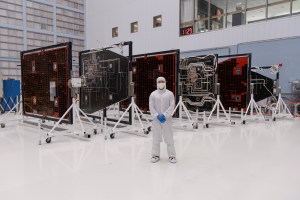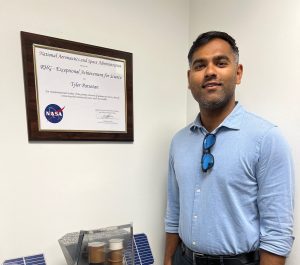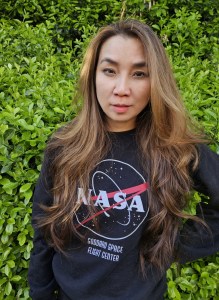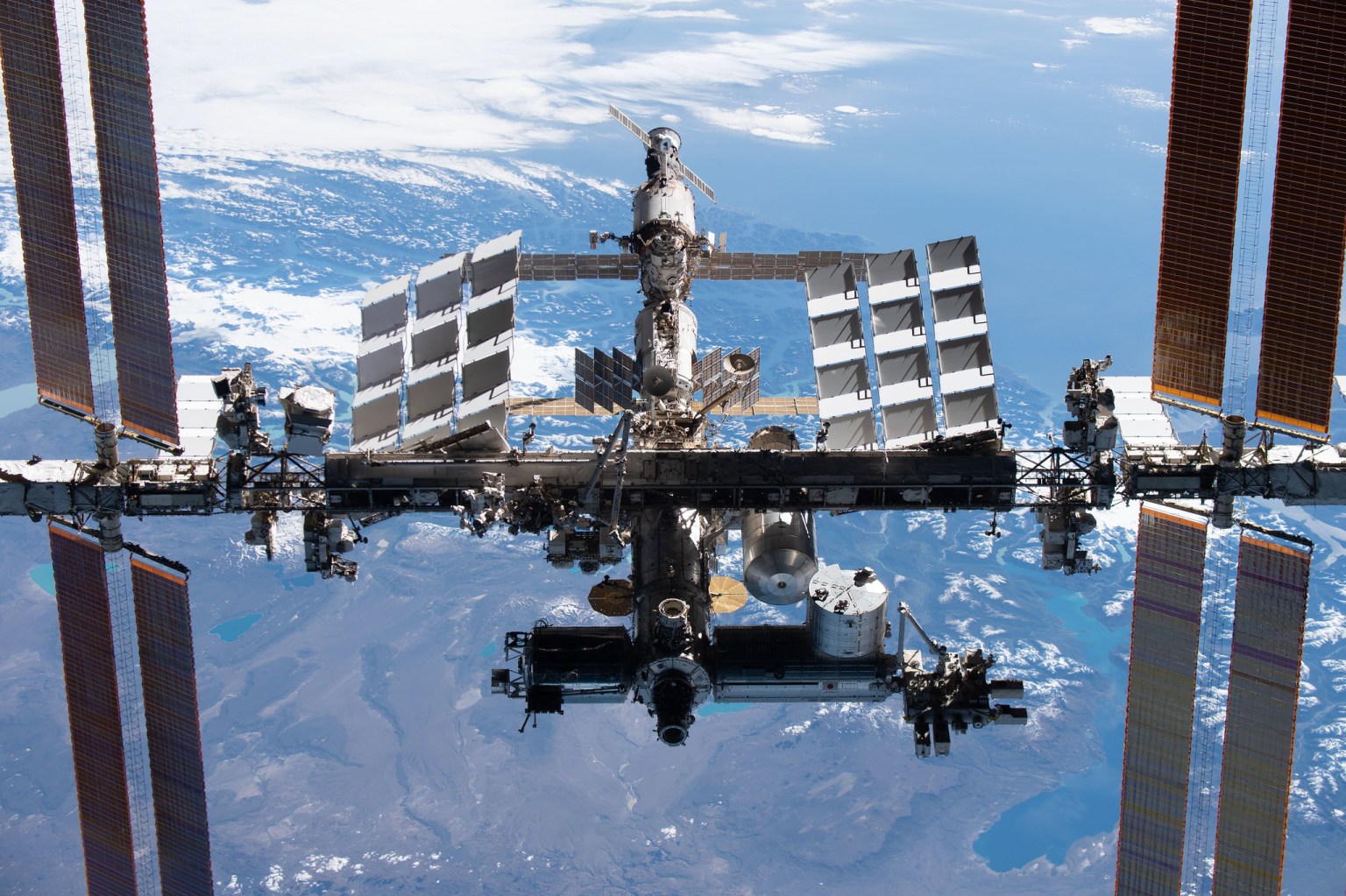Zachary Morse Hikes Hilltops, Caves Lava Tubes to Ready Moon Missions
Lunar geologist Zachary Morse scrabbles over Earth’s rocky landscapes to test equipment for future missions to the Moon and Mars. Name: Zachary MorseTitle: Assistant Research Scientist in Planetary GeologyOrganization: The Planetary Geology, Geophysics and Geochemistry Laboratory, Science Directorate (Code 698) What do you do and what is most interesting about your role here at Goddard? […]
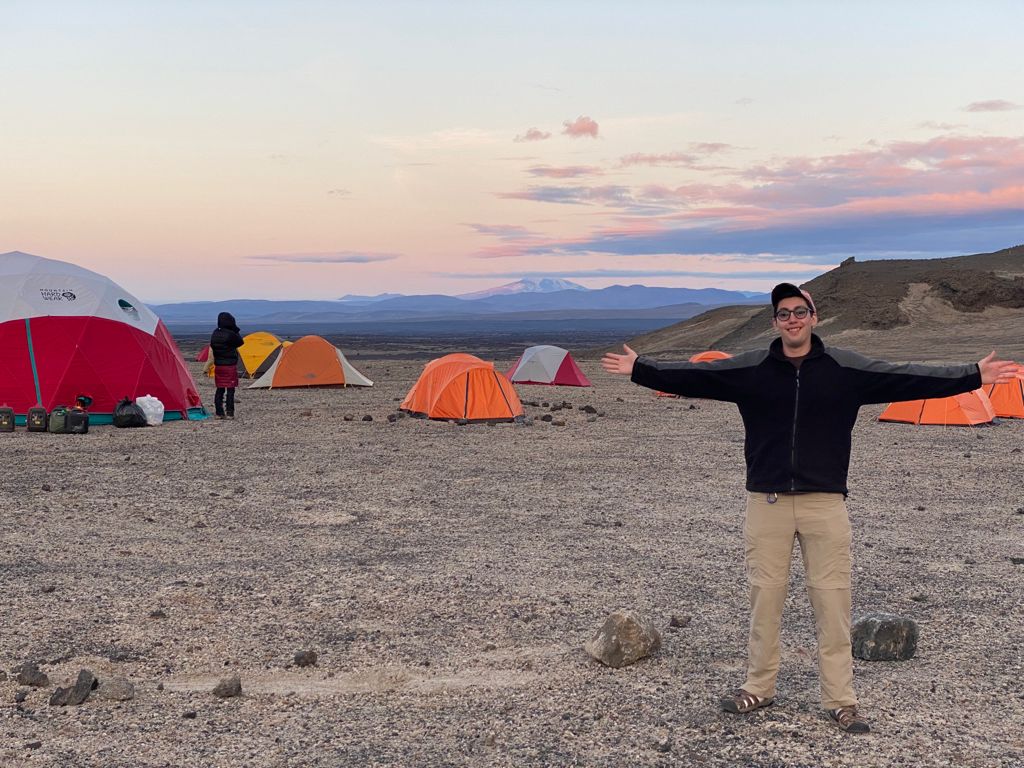
Lunar geologist Zachary Morse scrabbles over Earth’s rocky landscapes to test equipment for future missions to the Moon and Mars.
Name: Zachary Morse
Title: Assistant Research Scientist in Planetary Geology
Organization: The Planetary Geology, Geophysics and Geochemistry Laboratory, Science Directorate (Code 698)
What do you do and what is most interesting about your role here at Goddard? How do you help support Goddard’s mission?
I work with teams that integrate field instrumentation into future lunar and Mars exploration missions. We go to analog field sites, places on Earth that are geologically similar to the Moon or Mars, to test field instruments. I also support the development of science operations for crewed exploration of the lunar surface.
Why did you become a geologist? What is your educational background?
I always knew that I wanted to study space. In college I started in engineering, but switched to geology because much of the science NASA does on the Moon or Mars involves studying the rocks.
In 2013, I got a B.S. in geology from West Virginia University. In 2018, I got a Ph.D. in planetary science from Western University in London, Ontario.
What brought you to Goddard?
In January 2020, I came to Goddard to do a post-doctoral fellowship because I wanted to work on the Remote, In Situ, and Synchrotron Studies for Science and Exploration 2 (Rise2) project. We go into the field to test handheld geologic instruments that could later be incorporated into missions.
What have been some of your favorite trips into the field?
Iceland, Hawaii, and the New Mexico desert, which is our primary field site for Rise2. These were organized as part of the Goddard Instrument Field Team, a group that hosts trips each year to different analog field sites.
The Iceland trip was my favorite because the place we got to explore looked almost exactly like pictures of the Moon’s surface. It was beautiful and the right setting to learn about the Earth and the Moon. Our team was about 40 people. We were there for two weeks. We mostly camped.
It was definitely a unique experience, one hard to put in words. On Earth, you would normally go camping in a lush forest. But there were no trees, just rock and dust. It was absolutely beautiful in its own way.
The Hawaii trip was also unique. Our team of about 30 people spent almost the entire 10 days in the lava tubes. Not many people get to go into lava tubes. It was very exciting. The biggest part of the lava tube was about 20 feet high and about 10 feet wide. The smallest was so small we had to crawl through.
How do you document field work?
In addition to scientific data, we always take pictures of the rocks and outcrops. It is important to document what a site is like before people interact with it. Sometimes we collect rock samples to bring back to the lab, but we leave the place as we found it.
Where do you see yourself in five years?
I hope to remain at Goddard; I love it. The team is great and the science is fascinating and important. I want to keep pursuing opportunities for field work. My main goal is to get involved in a lunar mission and support Artemis lunar exploration.
What do you do for fun?
I love the outdoors. I love kayaking on lakes, rivers, and streams. My favorite place is in the Adirondacks. I also love hiking, which I do all over, especially in West Virginia.
Who is your mentor and what did your mentor teach you?
Kelsey Young is my supervisor and mentor. She has taught me so many things including how missions will function and how we can best test equipment in the field for future missions. She taught me how to be organized and focused.
Who inspires you?
Jack Schmitt is an Apollo 17 astronaut who inspired me because he is a geologist. He was the first and only professional geologist who walked on the surface of the Moon during the Apollo missions. I have heard him speak many times and have personally met him.
I would jump at the chance to be the next geologist-astronaut!
What rock formations in the world would you like to explore?
Top of my list would be to explore Acadia National Park in Maine. There is a ton of diverse geology in a small area and the pictures all look stunning. I would also love to visit Glacier National Park to experience the glacier before it melts.
What is your “six-word memoir”? A six-word memoir describes something in just six words.
Exploring Earth to prepare lunar missions.
By Elizabeth M. Jarrell
NASA’s Goddard Space Flight Center, Greenbelt, Md.
Conversations With Goddard is a collection of Q&A profiles highlighting the breadth and depth of NASA’s Goddard Space Flight Center’s talented and diverse workforce. The Conversations have been published twice a month on average since May 2011. Read past editions on Goddard’s “Our People” webpage.
Share
Details
Related Terms
What's Your Reaction?





























